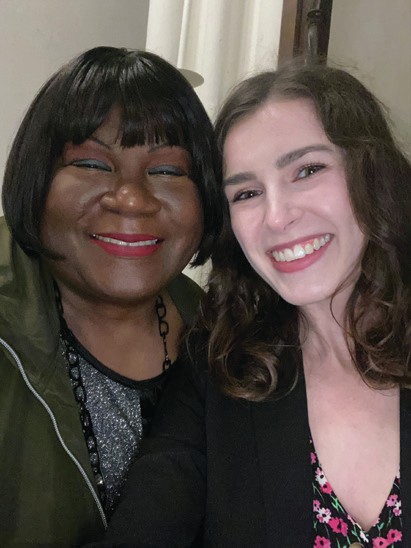FORD’S Thoughts
Nail trends & tales across the globe
Global business & beauty education expert, KIM FORD, shares news, views & observations from the international nail circuit

ABOUT KIM FORD
Kim Ford has worked in the beauty and education sectors for over three decades, in more than 40 countries. She has honed her skills in beauty, spa, sports, nails, holistic therapy and aesthetics, in private and public education establishments, spas, salons and retail businesses.
Kim has extensive experience as an international examination officer for awarding organisations, and has held the titles of chairman of BABTAC and CIBTAC and vice president of CIDESCO GB. An education consultant for CIDESCO International, she sits on a number of industry boards globally as a director or trustee, and has won awards for education and business in the UK and internationally.
As owner of Beauty Enterprise Solutions, Consultancy & Training, Kim supports industry education establishments in gaining accreditation or endorsement. She strives to raise industry standards and help beauty professionals reach their education and career goals.
OUT & ABOUT
I attended the NHBF’s Top 100 Influencer Index event at St John’s Church in Hyde Park, which acknowledged professionals who are positively contributing to the beauty sector. I caught up with Scratch’s Rebecca Hitchon, and congratulated Caroline Larissey on her appointment as NHBF chief executive.

A snap with Scratch’s Rebecca Hitchon.
Hello nail superstars! It’s a pleasure to begin my 12-month column series for Scratch with some international nail tales. I have been examining beauty students across the globe for over 20 years and seen amazing work by nail technicians, particularly in Malaysia, China, South Korea and Thailand. When I visited these countries, I noticed a huge number of nail venues offering manicures, pedicures, nail enhancements and nail art – often with stencils and airbrushing.
Who started the trend for nail polish, extensions & nail art?
Nail colour and design has historically been used for social codes and cultural appropriation. My research credits the Chinese with creating the first ‘nail polish’ in 3,000 BC, and finds that artificial nails were originally worn by Egyptian women as a symbol of status and wealth. In the 15th century, Incas showcased nail art: decorating nails with intricate pictures of eagles.
The influences
Nail trends vary from country to country, and the Vietnamese nail market is thriving. Many workers arrived in the US in the late 1970s and ‘80s to set up nail salons, and are renowned for their intricate designs and craftmanship.
Celebrities and influencers have also had a huge impact on the growth of the nail industry. According to Fortune Business Insights, the global nailcare products market was valued at $22.34 billion in 2022, and is projected to grow from $23.41 billion in 2023 to $32.84 billion by 2030. Vegan, natural and eco-friendly brands are becoming increasingly popular, and I have witnessed trends for swirl nails in Malaysia, 3D nail art in Korea, chromes and metallics in the Caribbean, and Kawaii, anime and 3D abstract nails in Japan. Vietnam is showing a penchant for multi-dimensional embossed nails, glass nails and lotus nail art: an homage to Vietnam’s national flower.

Image courtesy of Top To Toe Academy, Malaysia
Training talk
Most nail technicians in these countries will travel for high-quality training, to master advanced nail techniques and innovative designs. Many students I have examined for nail qualifications hail from the UK, Vietnam, South Korea, China, Japan and the United States.
Shaping up
In Brazil and the Caribbean, long toenails and coffin, round or gothic stiletto shapes with extravagant nail art are popular. It’s not my preference, but I have seen these looks in countries with warm climates, where closed toe shoes are not often worn. Fingernails are also long, and there’s a preference for lipstick or arrowhead shapes.

Image courtesy of Top To Toe Academy, Malaysia.
Asia’s nail art enthusiasm
In Asia, Korean gradient nails are making their mark. The style creates a smooth transition of colours, from the cuticle area to the tip of the nail, using a sponge to blend the shades and leave a soft and versatile ombré effect. Japanese 3D nail art is also popular, with additions including gems, pearls, flowers and bows to reflect the wearer’s personality. Those that request Chinese nail art welcome bold and vibrant designs with intricate patterns, symbols and calligraphy: a reflection of the rich cultural heritage of China.